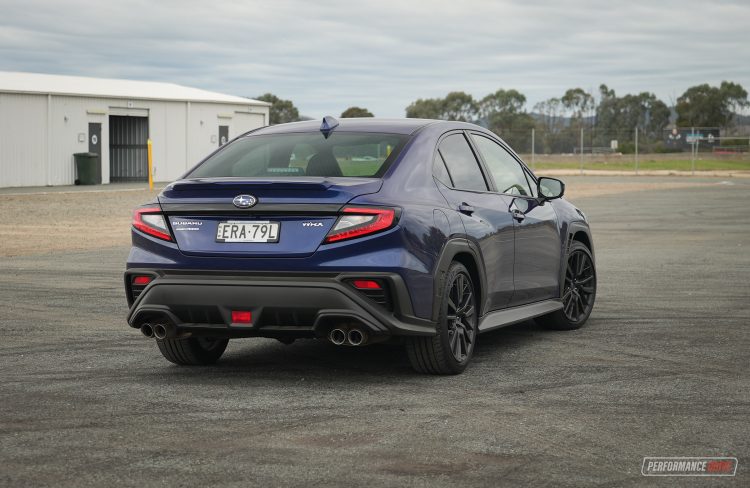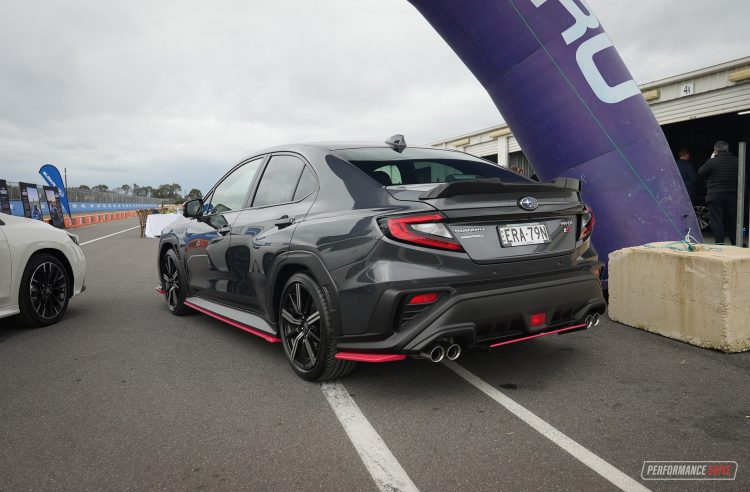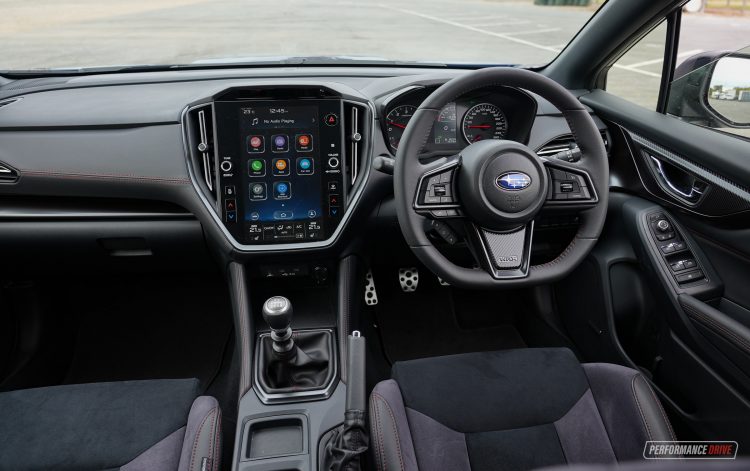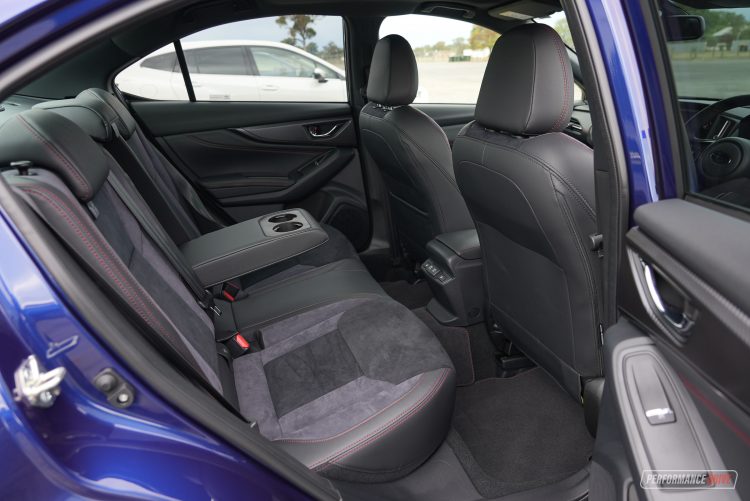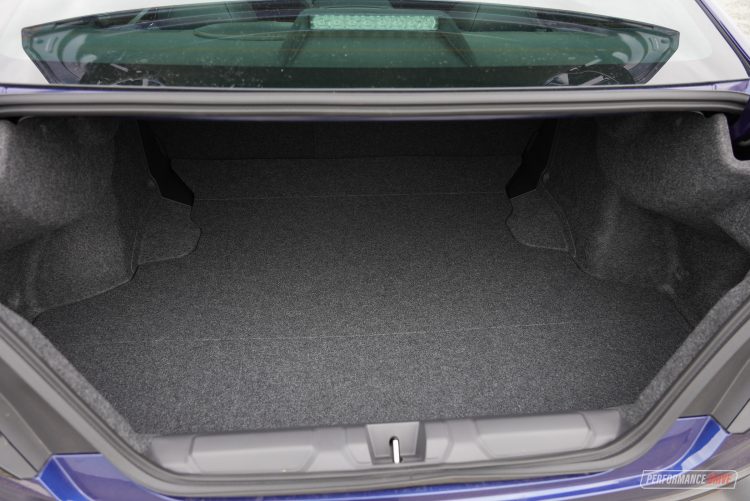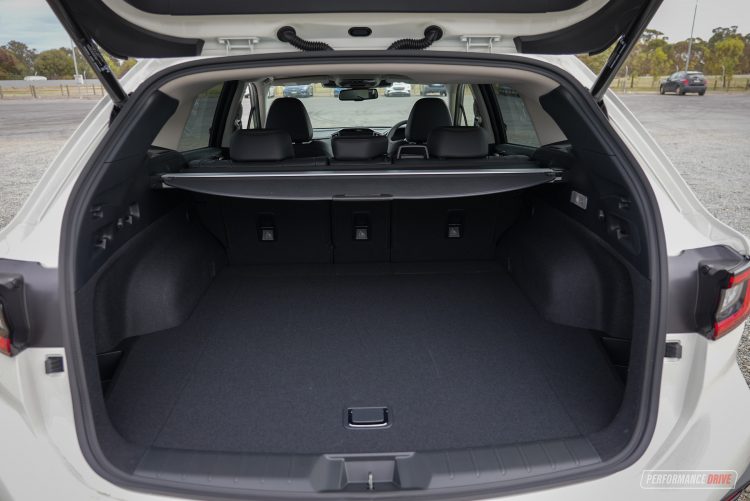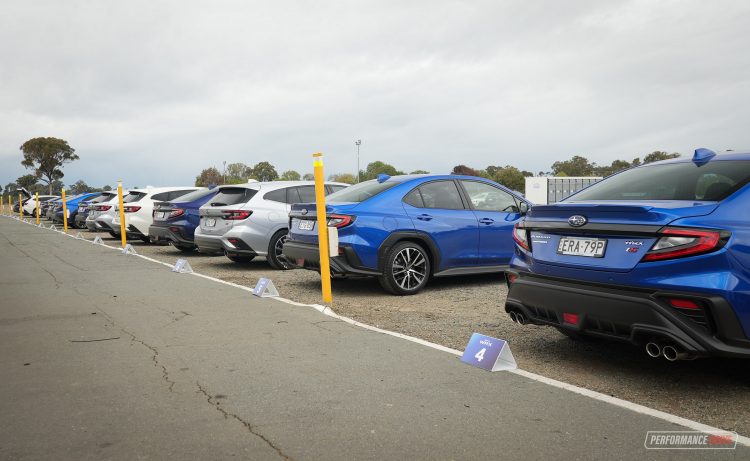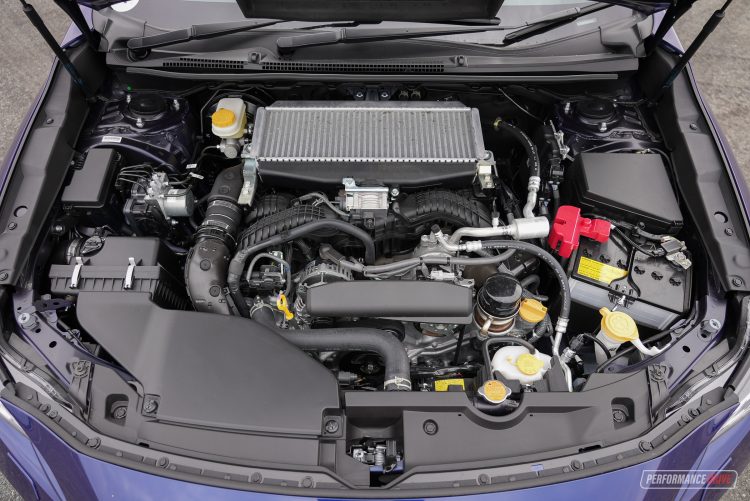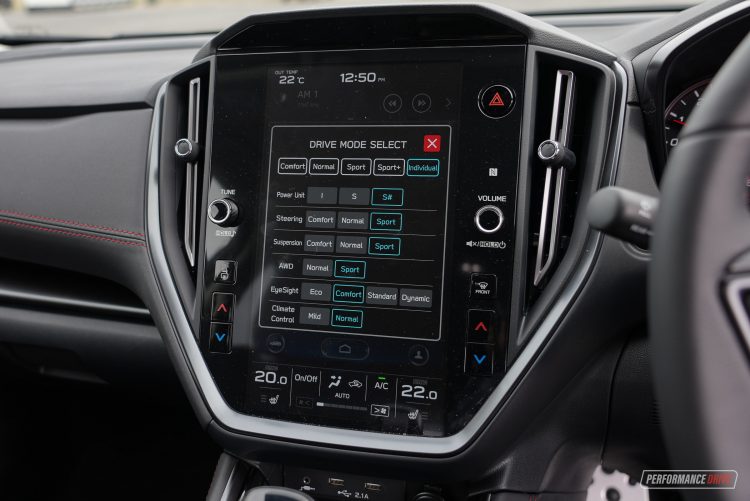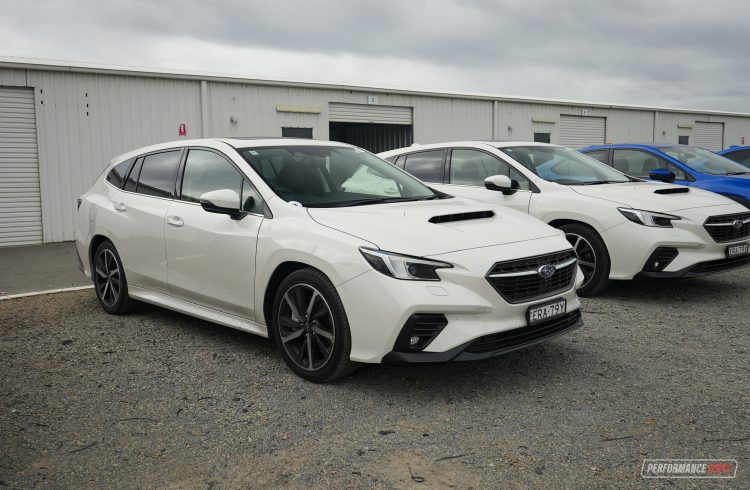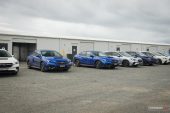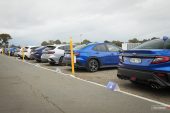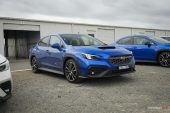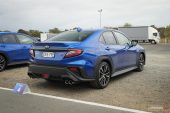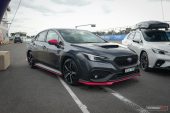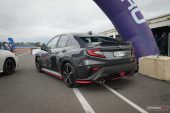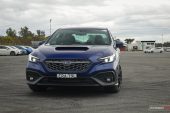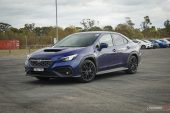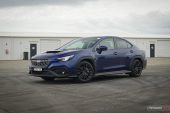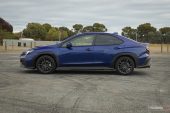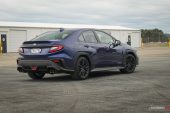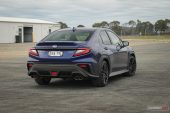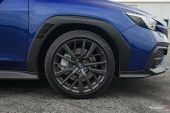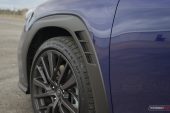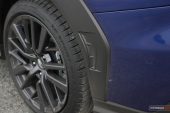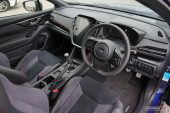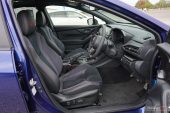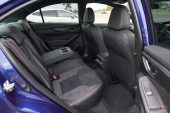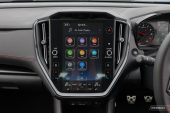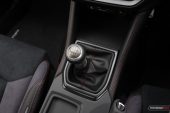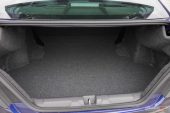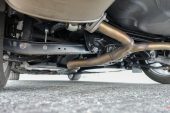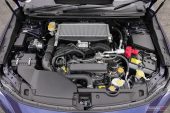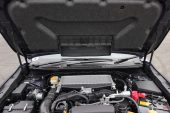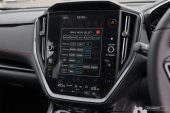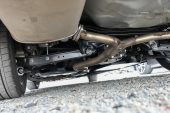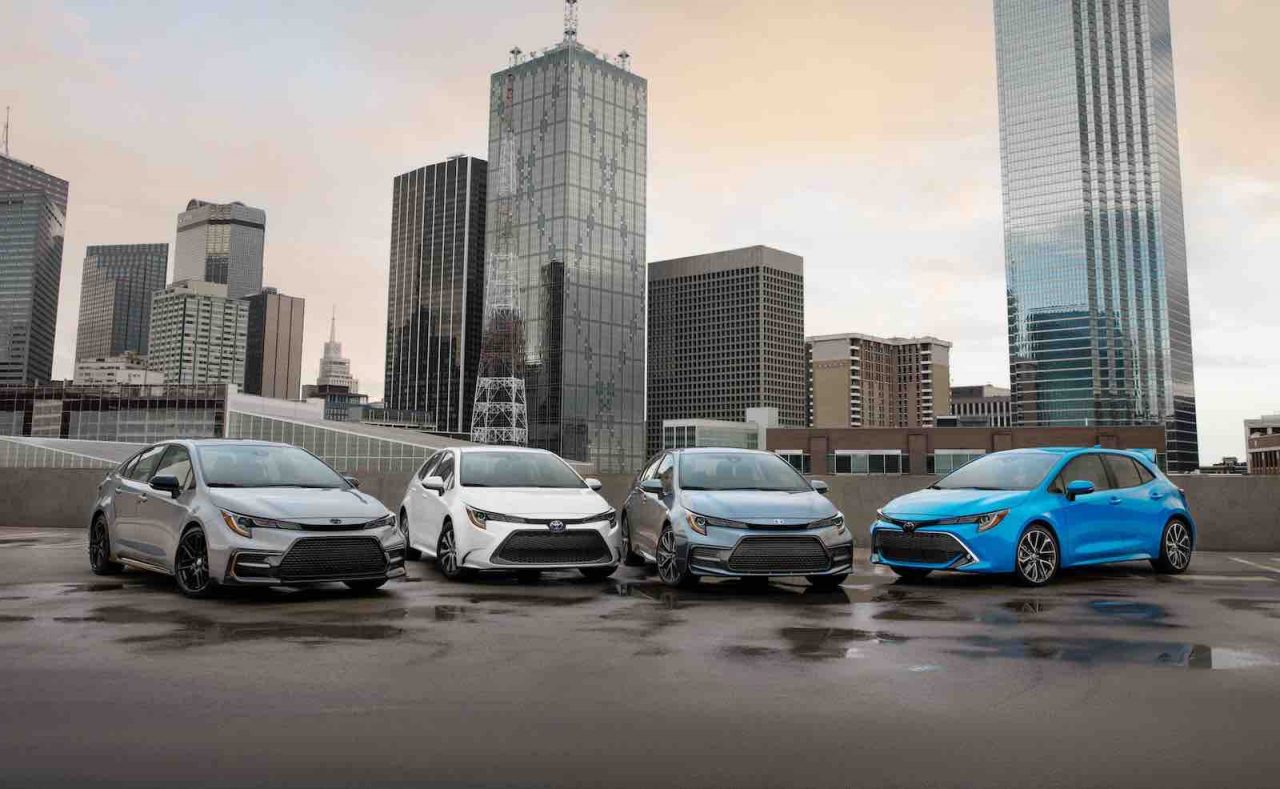Welcome to the all-new Subaru WRX. Yep, the rally icon is back. And it’s about time really considering the outgoing model was on the market for around eight years with no major update.
The new model is the second-generation of the WRX series, since it departed from the Impreza family, but the fifth-generation if you count all models donning the legendary badge. It’s based on the Subaru Global Platform – actually around six years old now – helping the new model become stiffer, safer, and more advanced than ever before. It also supports a fresh body design that meshes in with Subaru’s latest themes.
Three main trim lines are on sale in Australia, spanning from the WRX, the WRX RS, and the tS. The sedan goes one further by including a manual option for all but the top tS trim, with the Sportswagon sitting in as an aut0-only option. Subaru Australia says it will monitor market feedback regarding the possibility of a manual option for the wagon. Prices start from the following (excluding on-road costs):
Sedan
2022 Subaru WRX manual: $44,990
2022 Subaru WRX auto: $48,990
2022 Subaru WRX RS manual: $50,490
2022 Subaru WRX RS auto: $54,490
2022 Subaru WRX tS auto: $56,990
Sportswagon
2022 Subaru WRX: $49,990
2022 Subaru WRX GT auto: $55,490
2022 Subaru WRX tS auto: $57,490
2022 SUBARU WRX sedan – THE SPECS
Engine: 2.4-litre flat four-cylinder
Output: 202kW@5600rpm / 350Nm@2000-5200rpm
Transmission: Six-speed manual or CVT auto
Drive type: All-wheel drive
Claimed 0-100km/h: 6.0 seconds, 6.1 for CVT
Tested 0-100km/h: 6.28 seconds, 7.48 for CVT
Tare weight: 1479kg
Official fuel economy: 9.9L/100km, 8.5L for CVT
Starting price: $44,990
Firstly, we must admit, we were not a fan of the styling on paper/screen when it was first revealed. But honestly, it does look much better in the metal. It’s surprisingly aggressive and muscular, which is totally in character with the original. You’ve got the trademark bonnet scoop up front, rally-inspired driving lights in the front bumper, and carved wheel arches making it look like it’s just finished pumping iron at the gym.
One of the elements we really didn’t like in the beginning were the crossover-style wheel arch moulds. Yes, those black plastic things around the wheels that every wannabe 4×4 has these days. Well, look closely and you’ll see they feature a dimpled imprint on them, which continues all around the lower skirting of the body. This surface has been specially crafted to help airflow around the body. They act a bit like a golf ball surface, reducing drag.
Subaru says it wind-tunnel-tested the body with and without the dimples and found clear results in favour of having them on. You might notice the little vents behind the front wheels as well. These help exhaust air from within the wheel arch during suspension compression, aiding stability at the limit and assisting with airflow along the sides of the body. It looks like it has fake vents at the back, in a similar position. But instead, you’ll notice slits in the rear bumper bar that perform a similar function – on US-spec models the fake vents are replaced with mandatory reflectors.
At the back it also gets the fashionable full-width taillight trim, with yet more of that golf ball imprint for the lower skirting. Buyers will be able to dress up the bodywork even more with STI parts, too. Special enhancements will be available as an official option. Subaru had a fully kitted out example on display during this launch event to show off the potential.
Inside, it is quite a familiar atmosphere. But it’s all been modernised. Firstly you might notice the huge 11.6-inch portrait-style touch-screen on the dash, standard across the range. It’s home to pretty much all on-board functions. There’s also a small digital screen for the gauge cluster with various display modes (including a turbo boost gauge), and it’s great to see actual mechanical dials for the speedo and rev counter surrounding the screen. Some buyers might see this as being not modern enough, especially the younger generation buyers.
Around the cabin you get that practical and spacious feel that Subaru is renowned for. Passenger comfort is good, with heaps of space to move about, and excellent outward visibility. There’s also plenty of storage areas around the place, with dual cup holders in the front, a spot for your phone, albeit with no wireless charger, and a decent-size centre box and trays.
The front sports seats do a great job of holding you in position while offering good cushioning for comfort. You do sit quite low, being a sedan, and ground clearance is measured at 135mm like the previous model. A natural and well-aligned driving position continues. However, it would be nice if the steering wheel face was more vertical in our opinion, as it does tilt forward at the top, which means you have raise your seat before becoming truly parallel with its axis.
Rear seat space continues to impress, particularly among most of its rivals. Seat heating for the outer seats is standard on the RS and tS, and charging ports are presented. Strangely, there are no climate vents in the back of the console. Aside from that it is a very comfortable place to be for this class.
The sedan offers a decent-size boot, with just over 400 litres (414L for base model, 411L for RS and tS). That’s similar to some of the leading hatchback rivals. Although, with the sedan layout it can be difficult to load in bulky items in comparison to a hatch. Over in the WRX Sportswagon you have 492L, or up to 909L with the rear seats fold down (1430L if loading up to the ceiling). A space-saver spare wheel sits under the floor in all variants.
We like the dark grey alloy wheels on the entry model and RS compared with the machined-face rims on the tS. They’re all 18s in any case, wrapped in Dunlop SP Sport Maxx GT tyres, measuring 245/40. The wagon uses narrower, and inferior, in our opinion, 225/45, Yokohama BlueEarth GT tyres.
Undoubtedly the biggest change is the new 2.4-litre turbo flat-four engine. This is the FA24, similar to what is applied in the latest Liberty/Legacy, and soon the Outback in Australia. At 202kW and 350Nm here, it produces only marginally more power than the previous 2.0-litre turbo (197kW), with the same torque. Peak torque is available from 2000rpm, instead of from 2400rpm in the 2.0T.
During the event we did a couple of laps on a shortened version of Winton Raceway, under the guidance of an instructor in a lead vehicle. Unfortunately, we were not able to record a full lap time for you.
We did conduct some 0-100km/h tests on a quiet back road though. But keep in mind the tests were carried out in less than ideal circumstances, running on a tight schedule and in vehicles that had very low kilometres on the clock (not fully run-in). We will be conducting proper tests in the near future.
2022 SUBARU WRX sedan – THE VIDEO
According to our Racelogic Vbox Sport, out of three runs in each the manual and CVT auto sedan, the best result we saw for the manual was 6.28 seconds and the best for the CVT was 7.48 seconds. These times are hardly spine-tingling, considering a manual i30 N hatch – front-wheel drive – can achieve the sprint in a PD-tested 6.09 seconds. The DCT auto version obliterates the WRX as well, doing it in 5.19 seconds.
Obviously acceleration isn’t everything but it does give you some idea of a powertrain’s efficiency and effectiveness in turning petrol into propulsion. We think the new model here is already aged in that regard. It should be as quick as a Golf R by now, but it’s way off. Despite producing similar power and weighing about the same.
What we think lets down its performance is the low torque figure. For example, we were seeing 350Nm from most 2.0L turbo engines about five years ago. Heck, even the old Ford Falcon EcoBoost 2.0T from 10 years ago developed 179kW and 353Nm. And that’s with a 400cc deficit. Come on, Subaru. Get with the times.
Fortunately, out on a country road or a twisty mountain pass, standing-start acceleration figures are almost irrelevant and in fact they do not represent this car’s meaty mid-range pull. Don’t worry about changing down to second gear for tight turns. Just leave it in third and it pulls strongly, with no lag or labouring.
Another element that strikes high levels of excitement is the handling and grip levels. The new WRX firmly clings to the tarmac, and the steering feels mechanical and raw. We also like the firm-ish suspension setup. We were expecting it to be quite soft. But it’s not. We wouldn’t call it overly rigid, but it is definitely a sporty tune. This helps to minimise body-roll so it’s almost non-existent.
The manual models feature a viscous limited-slip centre differential, while the CVT automatic uses a more complex variable torque distribution setup. To be frank, the automatic makes for a completely different vehicle to the manual. It’s not as sporty and not as fun. CVTs are boring and make engines sound like a cat being swung by its tail in our opinion. In a conservative hatchback or SUV, sure, CVTs can be a good fit. But we think a CVT has no place in a sports or sporty car like this. Shame on Subaru for thinking otherwise. You certainly don’t see Porsche or Lamborghini adopting CVTs.
As hard as Subaru might try to label it is a ‘performance’ transmission with improved step ratios, it is not interactive. Subaru has even gone to the length of introducing an almost patronising ‘rev-matching’ downshift function. But in reality, there is no engine braking to be felt, at all. The revs climb but the car does not noticeably slow down. This eliminates the point of rev-matching in the first place as there is no need to prepare a ratio for corner exits. In the end, we think this would be a much more wholesome experience with a conventional eight-speed auto.
If you opt for the tS in the wagon you do get adaptive dampers, which is cool. But for some reason the manual sedan misses out. We’re not too upset by this though as the Sportswagon seems like it needs to flaunt different modes and functions to help bolster its versatile and practical character. In our opinion the wagon doesn’t feel as taut or as committed as the sedan in any mode, although it is still a fun and capable wagon to hurl down an inviting road. And it obviously would make a great family car, offering the safety of all-wheel drive.
2022 SUBARU WRX sedan – THE VERDICT
Our pick is the base model manual sedan. Yes it misses out on the adaptive dampers and Subaru’s complete EyeSight safety suite featured in the automatics, but to us, the WRX is meant to be a raw driver’s machine; not an autonomous, wrap-you-in-cotton-wool transport capsule. And the base model, we think, is the closest connection to that original WRX formula that we all feel in love with.
The starting price of around $45k is also not far off the original starting price of past models, despite the economic strife going on at the moment, with chip shortages and other production delays.

